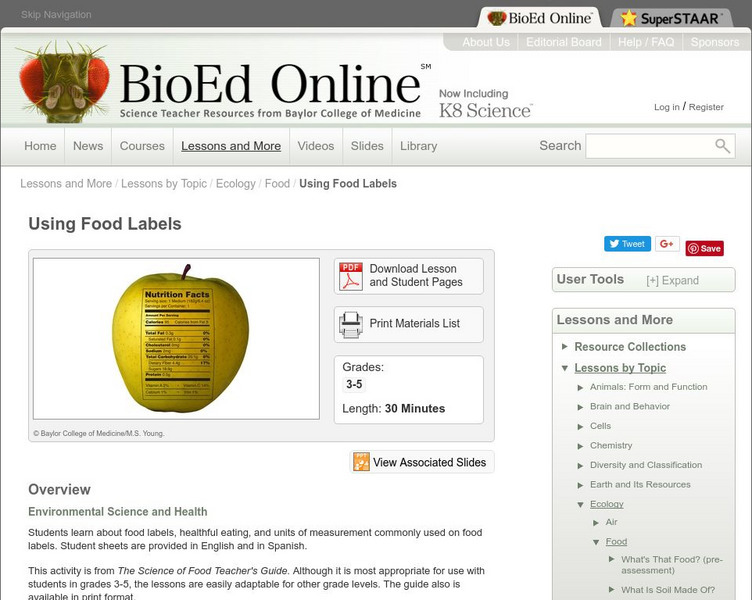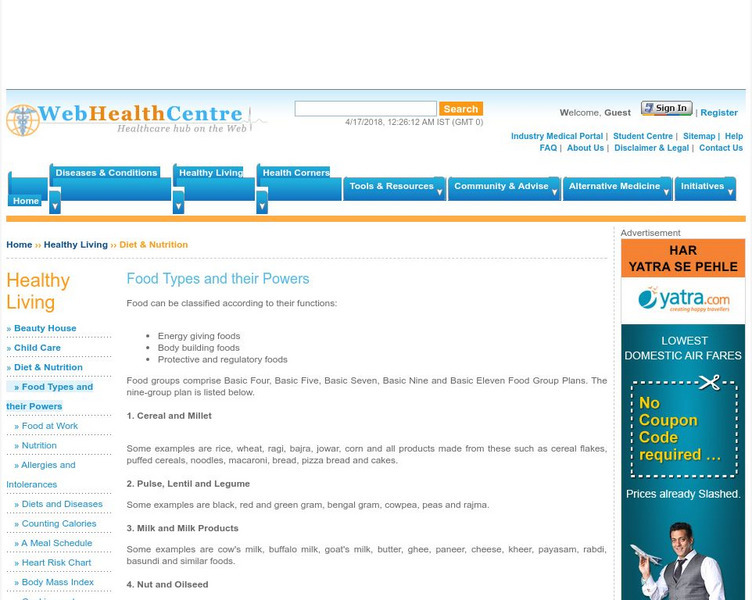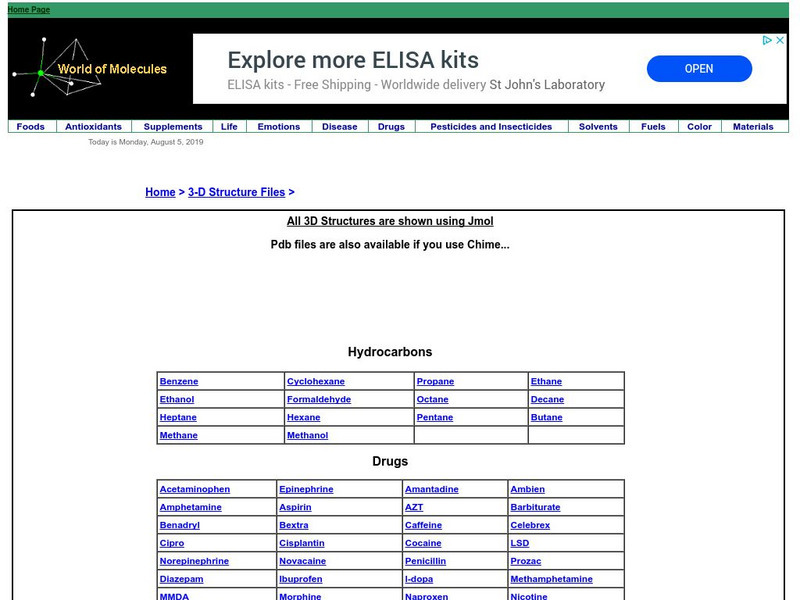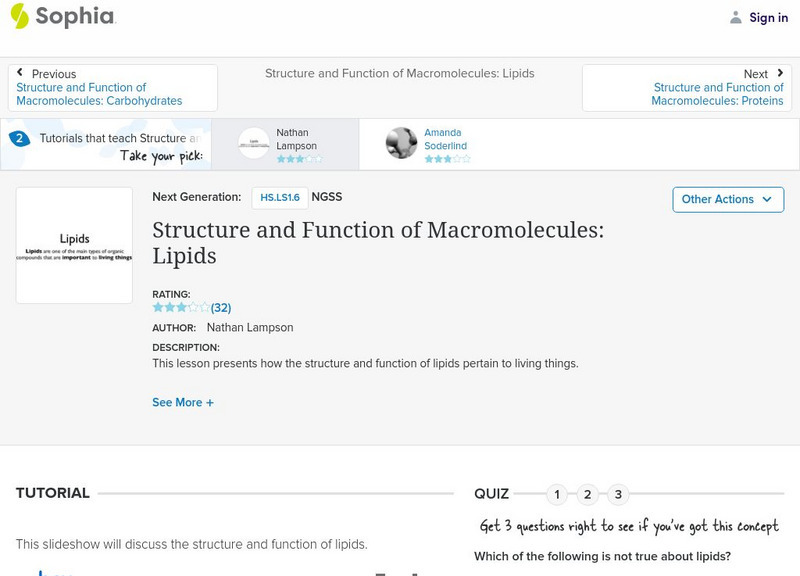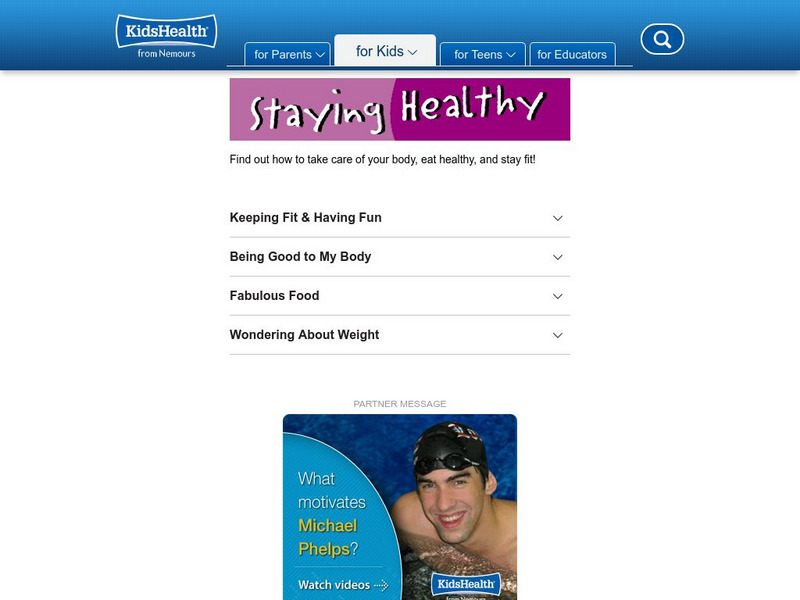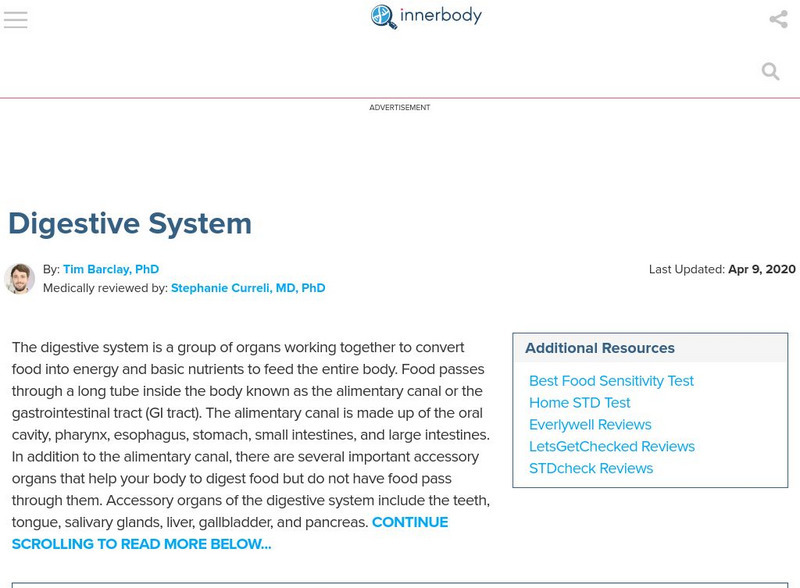Curated OER
Reading Labels For Fat Types
Students analyze a variety of cooking oils to determine the amount and types of fats included in each.
Curated OER
Supermarket Science: The King Sooper Lab
Learners read product labels, compare fat, sodium, and sugar contents of various food items. They work with a partner and often employ the assistance of the deli and bakery managers in a supermarket.
Curated OER
Dribbling for Nutrition
Students practice reading food labels and determining the correct number of grams of fat and carbohydrates in a single serving. They work on improving dribbling skills during the task.
eSchool Today
E School Today: Your Revision Notes on the Nutrients in Food
Discusses food, why we need it, and the types of nutrients that food for humans must have.
TED Talks
Ted: Ted Ed: What Is Fat?
George Zaidan examines triglycerides, the varied molecules that make up fat, and how to identify which types of fat you are consuming. [4:22]
Michigan Reach Out
Newton's Apple: Body Fat
Through these lesson plans, investigate the different types of fat found in food and found in the human body. Discuss the functions and problems associated with dietary fat and make wise food choices based on what you learn about fat,...
BioEd Online
Bio Ed Online: Using Food Labels
Do you know how to read a food label? Food labels provide important information about the nutritional value of foods. In this lesson plan students will learn about food labels, healthful eating, nutrition facts, and units of measurement...
Harvard University
Harvard School of Public Health: Fats and Cholesterol
This public health resource provides information and resources on fats and cholesterol.
CK-12 Foundation
Ck 12: Lipids
[Free Registration/Login may be required to access all resource tools.] Students discover the structure of a triglyceride and distinguish between saturated and unsaturated fats. They also investigate structure of a phospholipid and a...
Khan Academy
Khan Academy: Biology: Macromolecules: Lipids
An article that discusses the structure and function of lipids. Learn the basics of fats, oils, saturated and unsaturated fats, triglycerides, phospholipids, and steroids.
Utah Education Network
Uen: Fat a Concentrated Energy Source
Through these lesson plans, students explore and discuss the role of dietary fat as an important energy source. In addition to providing detailed instructions for teachers, this website includes all the handouts and charts needed to...
Other
Story md.com: Wellness and Nutrition: Fats
Fats are part of a larger family of molecules known as lipids. Lipids occur naturally in your body and can also be ingested through the foods in your diet. Which fats are healthy and which should you avoid? The answer may surprise you.
PBS
Pbs Learning Media: Ratio and Proportional Reasoning: Food Labels
Learn how to use fractions to interpret food labels and make healthy eating choices.
Michigan State University
Michigan State University: Lets Net: Fat Counting Unit
Have you ever wanted to know how much fat you consume each day? How does that fat fit into your daily intake according to the food pyramid? 4 math lessons are included here that help both upper and lower elementary grades understand how...
Science Education Resource Center at Carleton College
Serc: Investigating Liquids: Color Changing Milk
In this chemistry lab, the students will investigate what happens to the liquids: milk and food coloring, when dish soap is placed on a Q-tip and then put into the solution.
Other
Cyberlipid: Simple Lipids: Acylglycerols or Glycerides
This site explains what glycerides are and why they are so important.
Other
Web Health Centre: Food Types and Their Powers
This website describes the nutritional values of different types of foods. Learn what types of foods are sources of carbohydrates, proteins, fats, vitamins, and minerals through a chart provided at the bottom of the page.
Other
World of Molecules: 3 D Structure Files
Investigate the three-dimensional structure of various molecules- both organic and inorganic.
McGraw Hill
Glencoe Biology: The Building Blocks of Life: Self Check Quiz
Try these five multiple-choice questions about the building blocks of life. The quiz is self-checking, and provides hints to the student if needed.
Other
1911 Encyclopedia: Glycols
This article provides information on how the glycol family was discovered. Includes specific information on glycerin and glycerides.
Sophia Learning
Sophia: Structure and Function of Macromolecules: Lipids: Lesson 1
This lesson presents how the structure and function of lipids pertain to living things. It is 1 of 2 in the series titled "Structure and Function of Macromolecules: Lipids."
Curated OER
Kids Health: Staying Healthy
Find yummy recipes for food to make yourself! There are also articles about the reasons for vitamins and minerals, how to eat when you're playing sports, and a number of other important topics.
National Institutes of Health
Niehs: Food Labels Tell the Story!
Read about the building blocks of food and how to read food labels to make better choices about what you eat.
Inner Body
Innerbody: Digestive System
Take a look inside the human body's digestive system. This site features diagrams of the digestive tract and each part is accompanied by labels and descriptions. Just select an organ by moving the mouse over its image.








